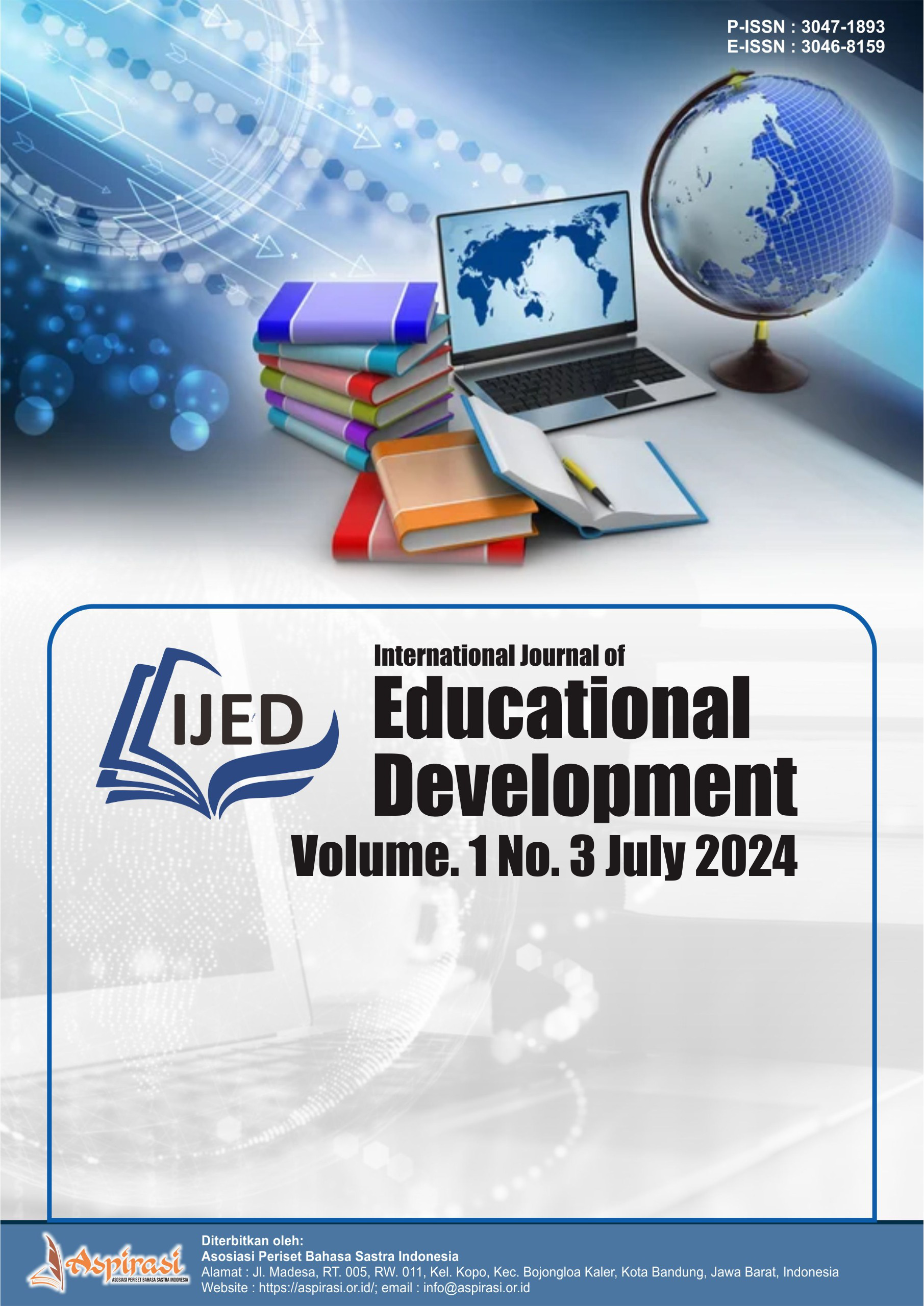Improving Student Learning Outcomes Using The Scramble Method
DOI:
https://doi.org/10.61132/ijed.v1i3.45Keywords:
Learning Outcomes, Scramble Method, StudentAbstract
The use of the Scramble method in science learning is a very important method and can be used as a form of motivation for students in learning because the Scramble method will be able to help students' memory or level of understanding of the material being taught so that student learning outcomes regarding science learning Natural Knowledge will increase. The use of the Scramble method is a group learning method by matching the question cards and answer cards provided according to the questions. The author's aim in this research is: To improve teacher performance in the learning process by using PTK and increase student learning outcomes regarding style material, especially class IV Madrasah Ibtidaiyah Mathla'ul Anwar Unggak Way, Teluk Pandan District, Pesawaran Regency. This research uses classroom action research (PTK). In this learning activity, the author uses the scramble learning method in the teaching and learning process in class. Furthermore, in carrying out this research, a process of continuous improvement or repeated actions (cycles) was carried out so that from the first cycle to the second cycle the aim was to improve student learning outcomes. From the data obtained, the researchers concluded that using the Scramble method could improve student learning outcomes in Natural Sciences Subjects for class IV students at Madrasah Ibtidaiyah Mathla'ul Anwar Unggak Way, Teluk Pandan District, Pesawaran Regency. The increase in the completeness of student learning outcomes can be seen from the results of cycles I to cycle II, there is an increase in the completeness of student learning. From the comparison of the results of cycle I of 63.15%, and cycle II of 89.47%, thus there has been an increase in learning outcomes of 26.32%.
References
Ahmadi, A. (1983). Psikologi Remaja. Jakarta: Rineka Cipta
Dimyati dan Mudjiono, (2013). Belajar dan Pembelajaran. Jakarta: Rineka Cipta
Kokom Komalasari, (2011). Pembelajaran Kontektual Konseb dan Aplikasi, Bandung: Refika Aditama
Lavyanto Trimo, (2006). Model-Model Pembelajaran Inovatif. Bandung: CV. Citra Praya
Miftahul Huda, (2013). Model-Model Pengajaran dan Pembelajaran Isu-Isu dan Paradigmatis. Yogyakarta: Pustaka Pelajar
Sudjana. Nana. (1990). Penilaian Hasil Proses Belajar Mengajar. Bandung: PT. Remaja Rosdakarya
Sudjana, Nana. (2009). Penilaian Hasil Proses Belajar Mengajar. Bandung: Rosda Karya
Downloads
Published
How to Cite
Issue
Section
License
Copyright (c) 2024 International Journal of Educational Development

This work is licensed under a Creative Commons Attribution-ShareAlike 4.0 International License.





